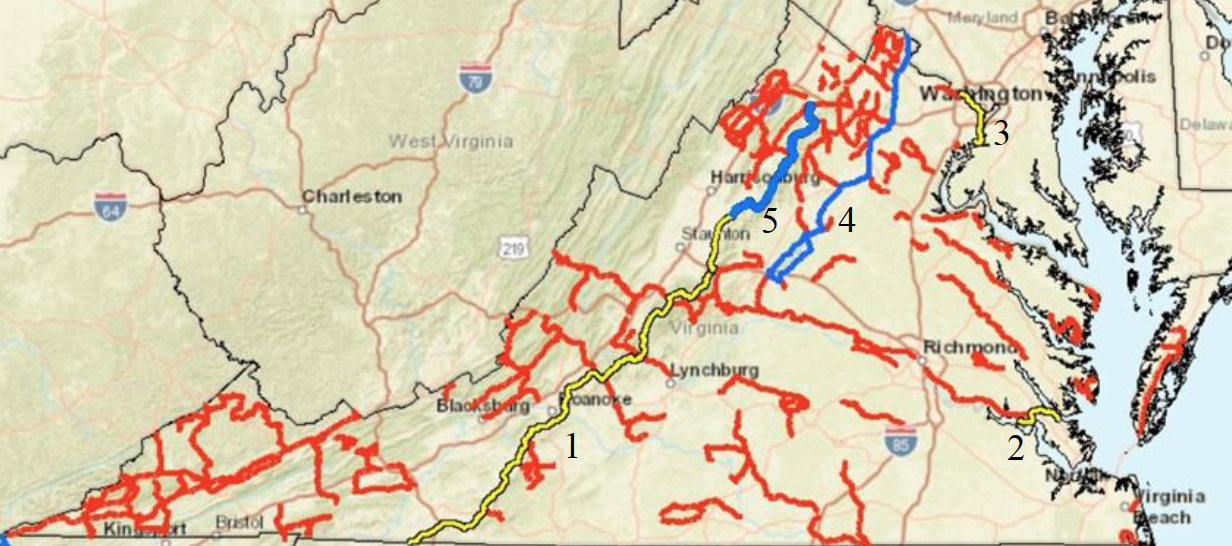Get the printable version
Each two-page document includes information about the state’s scenic byways program, in addition to a listitng and map of all state and national scenic byways within its borders.
Virginia’s Scenic Byways
The Virginia General Assembly passed the State Scenic Highway and Virginia Byways Act in 1966 in response to the Virginia Outdoors Plan (officially the Statewide Comprehensive Outdoor Recreation Plan). Since the program’s creation, over 3,500 miles of road have been designated. Virginia’s byways include both state and national designations. The extensive byways system is managed by the Virginia Department of Transportation (VDOT).
Key Points
- Virginia has a total of 227 scenic byways, including five national scenic byways and 222 state scenic byways.
- 67% of residents said they enjoyed driving as a way to connect with nature, according to the 2018 Virginia Outdoor Plan.
- The Blue Ridge Parkway, much of which is in Virginia, drew 14.7 million visitors spending $1.1 billion in local gateway regions, supporting 15,900 local jobs, according to a 2018 NPS study.
- Travel and tourism supports 237,000 jobs, totaling $6.4 billion in payroll income.
- Travel and tourism generated $1.8 billion in state and local revenue
Virginia Byways

Map Key:
- All-American Roads
- National Scenic Byways
- State Scenic Byways
All-American Roads
National Scenic Byways

Byways Provide Access to Public Lands
Virginia byways provide access to the Commonwealth’s most spectacular public lands, including one national park, 24 state parks, three national historic parks, two national forests, and two national monuments.
About the National Scenic Byways Program
The National Scenic Byways Program, established by Congress in 1991, recognizes historic, scenic, and culturally important roads, all of which promote economic development and tourism in communities around the U.S. There are more than 1,200 byways in all 50 states.
All scenic byways exhibit one or more of six core intrinsic qualities — scenic, historic, recreational, cultural, archaeological, or natural. For a road to be named a national scenic byway, it must first be designated a state, tribal, or federal agency scenic byway. Once achieving that, a road may apply for national scenic byway designation, but its intrinsic quality must be of regional significance. All-American Roads are the very best of the national scenic byways, demonstrating at least two intrinsic qualities of national significance.